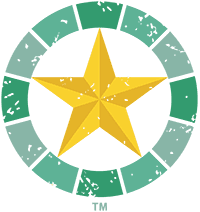By Sandy Baker
One of the most common types of treatment used in alcohol and drug treatment centers is called cognitive-behavioral therapy (CBT). The Ranch at Dove Tree uses this and other evidence-based therapies because they have been scientifically proven to help people suffering from substance use disorder. CBT is a form of talk therapy in which a person discusses specific concerns with a mental health counselor.
What Is the Goal of CBT?
The underlying benefit of CBT is to help people with negative thought processes recognize when their thoughts are moving in a negative way. In recognizing negative thoughts, a person becomes able to change course. Changing one’s thoughts about a situation changes how one responds to it, therefore reducing negative outcomes.
Most often, CBT is used alongside other types of evidence-based therapies, experiential therapy, and holistic treatment. It’s often used in individual sessions but can also be done in some group settings.
When Is Cognitive Behavioral Therapy Used?
It’s up to a mental health provider to decide when to use CBT with a person suffering from a mental health illness or a substance use disorder. CBT is commonly used with people who have an addiction, depression, eating disorders, or post-traumatic stress disorder.
When used properly, CBT can help a person to recognize the presence of a problem or a negative thought process and then cope with the challenge in a better manner. For example, a person with intense stress and depression may find themselves moving through the day with negative thoughts. Something simple happened, such as being late to work. That leads to self-deprecating thoughts, including feeling stupid for not remembering a meeting. Throughout the day, the person continues to beat themselves up, until they are frustrated and overwhelmed. In some situations, this may lead the person to drink or use drugs to cope.
Correctly applied, CBT offers a number of benefits. For example, it may help a client:
- Learn how to manage symptoms of a mental illness, such as anxiety or depression
- Treat mental illness itself when medications are not desired or ineffective
- Learn to manage emotions in a positive manner
- Manage chronic physical symptoms
- Avoid using drugs or alcohol as a solution to problems
- Overcome trauma, including emotional trauma
- Manage conflict and improve communication skills
Mental health professionals may encourage CBT when they want to empower a person to take charge of their thoughts to create a better outcome.
What Happens During CBT Therapy?
After meeting with a therapist and creating a treatment plan, you can expect several CBT therapy sessions over a few days or weeks. During the first session, your therapist will spend some time gathering information about you and talking about things you want to work on. Past emotional or physical trauma need to be discussed, especially if you continue to feel the effects of the trauma.
During the actual therapy session, your counselor will talk to you about your thoughts and feelings and help you gain the confidence to control your thoughts and emotions. Your therapist will guide your thought processes, showing you how making key changes in the way you think can impact the outcome.
The therapy process includes:
- Identifying a troubling condition.
- Becoming aware of your thoughts and emotions.
- Becoming aware of our beliefs about these problems.
- Recognizing the negative thinking or inaccurate beliefs.
- Reshaping those thoughts or beliefs to be more accurate.
Most people will have some homework to do during this process. You’ll need to work on learning to automatically change negative thought processes into better ones. It is not easy to do, but the results can be life-changing.
CBT doesn’t solve your problems, but it does help you to stop on the negative path that causes you to use drugs or to struggle with the symptoms of depression. For many people, CBT is the type of alcohol and drug treatment that allows them to gain more control over their future. You’ll be empowered to make better decisions for yourself no matter what’s happening around you. Once you leave inpatient rehab treatment, you may be able to use these techniques to avoid relapsing into drug use.







